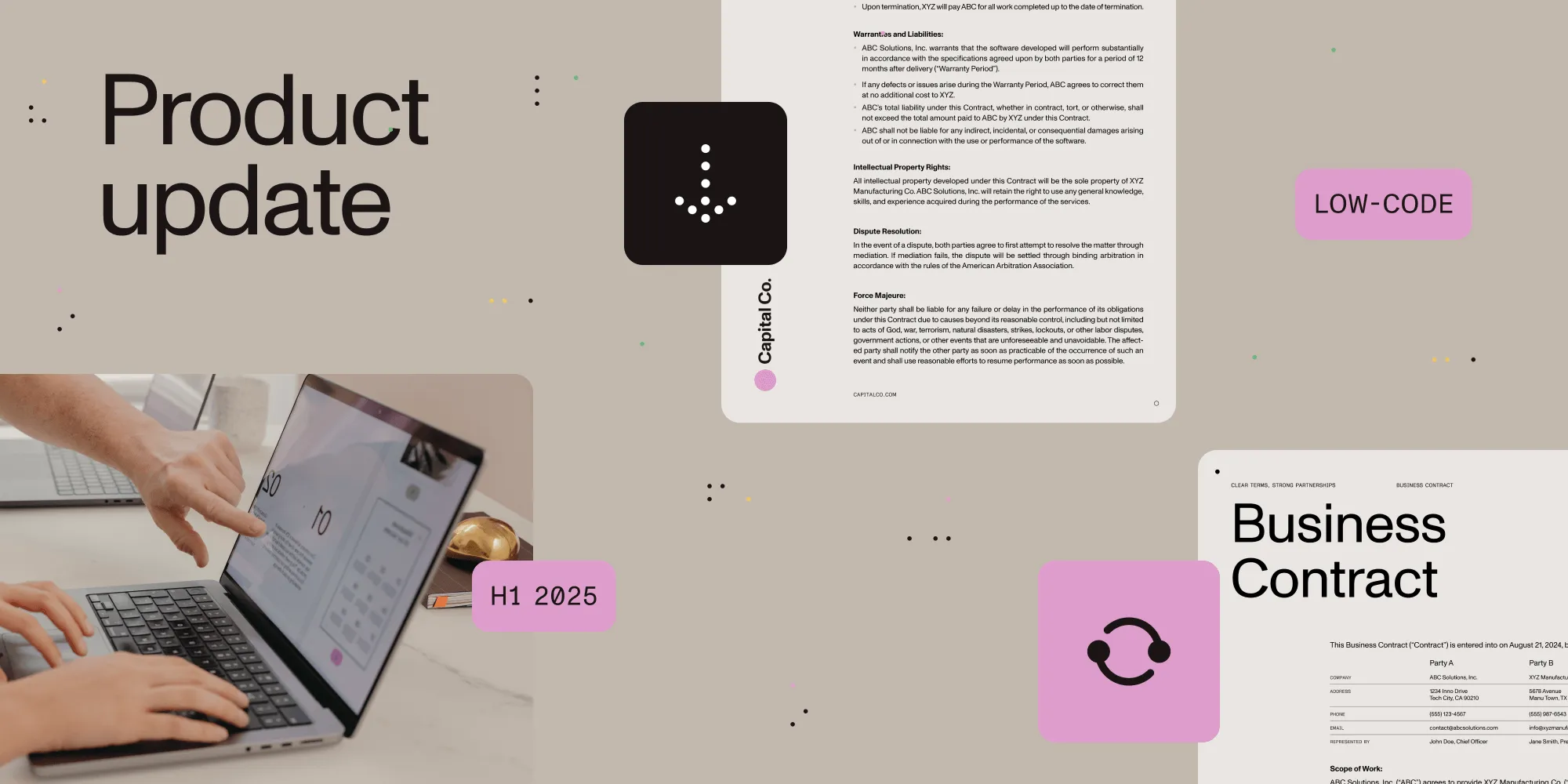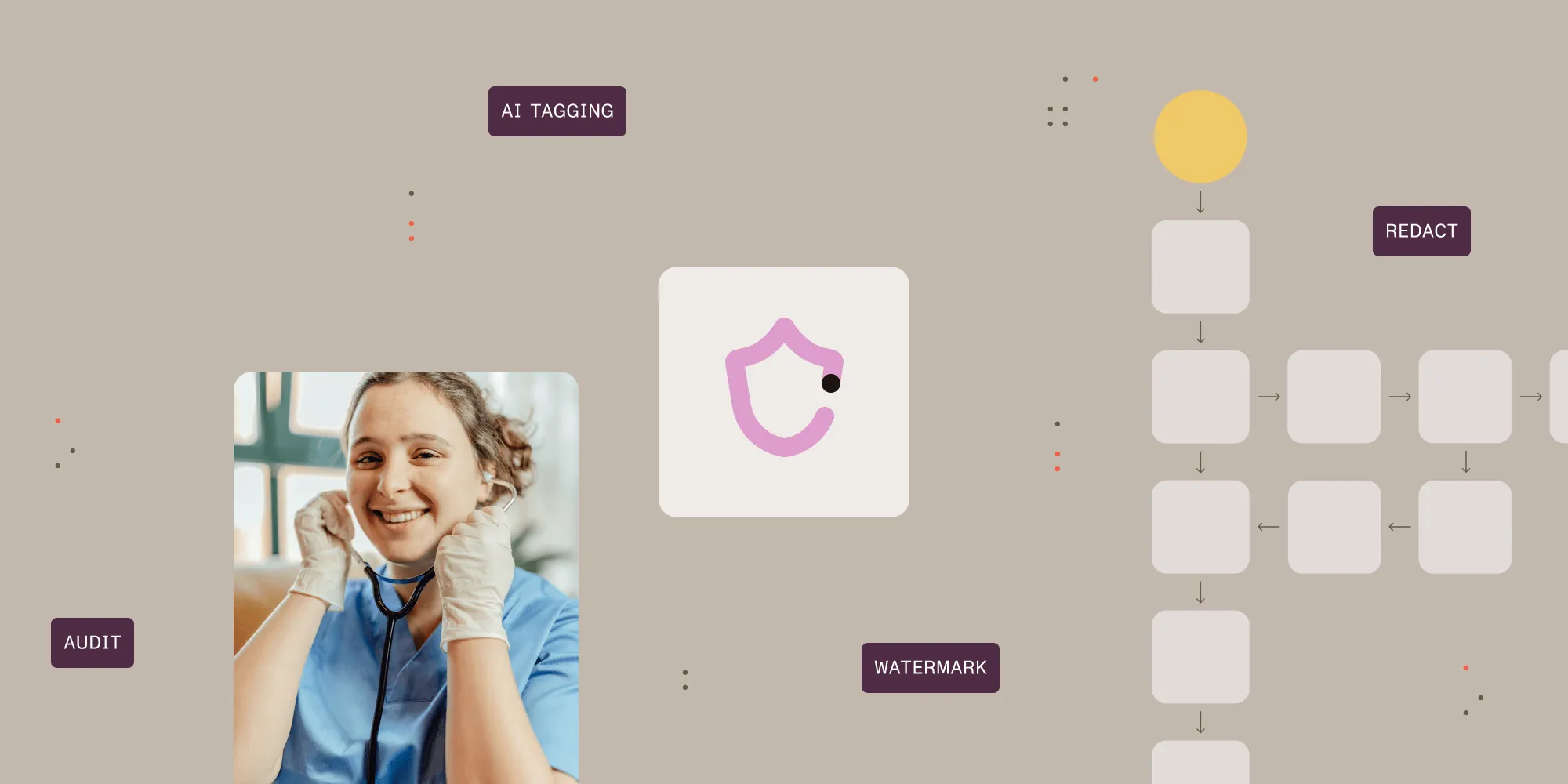Third generation low-code platforms evolution
Table of contents

We’re on the cusp of the third generation of low-code platforms that will facilitate dramatic improvements in business process efficiency and transform the productivity of both professional and citizen developers. This article will review the history of low-code platforms in the client server (first generation) and cloud (second generation) eras and discuss how document-centric AI promises to enable a new generation.
The Need for Low-Code Platforms
Low-code platforms are software environments that allow for the creation of applications through graphical user interfaces (GUIs) and configuration rather than extensive hand coding. These platforms provide prebuilt components, templates, and visual tools that enable developers — including those with limited coding expertise (“Citizen Developers”) — to design and deploy applications rapidly.
Reflecting changes in technology, business demands, and the overall digital landscape, the increased demand for software solutions coupled with a shortage of professional developers has fueled the rise of low-code platforms.
Low-Code Origins
This desire to build applications easily is certainly not new, as evidenced by James Martin’s 1981 book Application Development Without Programmers and (rather amusingly) by the excerpt below.
“A computer program designed to create other programs finally emerged last week after months of the sort of promotional brouhaha usually reserved for cars and film stars. The program, grandly titled “The Last One” can generate computer code in BASIC from English language instructions and its creators describe it as being able to produce ‘all the programs you will ever need for £260’”. New Scientist, 13 August 1981
Although “The Last One” was unsuccessful, it’s this thinking that would eventually lead to the creation of low-code platforms.
In the years that followed, software companies introduced various computer-assisted software engineering (CASE) tools, fourth-generation programming languages (4GL), and rapid application development (RAD) tools, with varying degrees of success.
First Generation — Client Server Era
The 1990s were a pivotal decade for the evolution of 4GL environments, with products like Visual Basic, Lotus Notes/Domino, Delphi, and PowerBuilder. These tools revolutionized application development by making it more accessible, efficient, and cost-effective. However, there was often a dependency between the “low-code” platform and underlying database system from the same vendor, which sometimes led to challenges integrating with other systems and subsequent vendor lock-in.
Microsoft Visual Basic (VB)
One of the most prominent low-code platforms of the era, VB allowed developers to create Windows-based applications with a visual interface builder and extensive libraries for common tasks.
Lotus Notes/Domino
This platform allowed for the rapid development of collaborative applications, combining a document-oriented database with a flexible user interface design tool.
Borland Delphi
Delphi combined a powerful Pascal-based language with a visual development environment, making it easier to build high-performance client-server applications.
PowerBuilder
A popular tool for enterprise applications, PowerBuilder provided a visual development environment and strong database integration capabilities, particularly with Sybase databases.
Second Generation — Cloud
As the internet became ubiquitous, businesses demanded faster and more efficient ways of developing integrated enterprise applications. A new wave of low-code platforms emerged in the 2000s and 2010s, offering more comprehensive and scalable solutions with cloud connectivity, in turn enabling new levels of integration between large numbers of heterogeneous systems.
Professional Developer Platforms
These platforms focus on advanced customization, complex integrations, DevOps support, scalability, and security. They enhance developer productivity and are suitable for complex, mission-critical applications.
Citizen Developer Platforms
These platforms emphasize user-friendliness, minimal coding, guided development, easy integration with popular tools, and basic security. They empower non-technical users to quickly develop applications to meet specific business needs.
Below is a list of some examples of cloud low-code platforms.
Microsoft Power Platform
Microsoft Power Platform is a suite of low-code tools — including Power BI, Power Apps, Power Automate, and Power Virtual Agents — designed to empower users to build custom apps, automate workflows, and analyze data seamlessly. It integrates with various Microsoft services, enhancing productivity and enabling data-driven decision making.
ServiceNow
ServiceNow is a cloud-based platform designed to enhance and streamline various business operations through its comprehensive suite of applications and its low-code development environment. It has expanded to support a wide range of enterprise functions.
Appian
Appian focuses on business process management and workflow automation, providing tools to quickly build and deploy complex, process-driven applications.
Salesforce Lightning
Salesforce’s low-code platform enables the rapid development of applications within the Salesforce ecosystem, leveraging its robust CRM and cloud infrastructure.
Third Generation — AI
AI is poised to significantly enhance low-code platforms, impacting various aspects of development, user experience, and application capabilities. Truly significant advancements will be achieved by making use of document-centric AI. As demonstrated by the developments in ChatGPT-4, generative AI is now able to apply near-human levels of reading ability to documents.
Below is a list of several ways AI will affect low-code platforms.
Development Assistance
The addition of AI marks the beginning of the third generation of low-code platforms, and we’re beginning to see enhancements in developer productivity through the use of generative AI prompts to automatically create low-code processes which can then be refined via a graphical UI. One example of this is Microsoft’s use of Copilot in Power Automate.
Beyond simple prompting, AI will enable more complex low-code processes and forms to be generated automatically via prompts that reference existing documents and legacy forms. One example might be modernizing a paper-based incident reporting system by using source procedure guides and forms.
Data Extraction
AI PDF data extraction from documents automates the process of identifying, classifying, extracting, and organizing relevant information from various document types, significantly enhancing accuracy and efficiency in data handling.
Predictive Analytics and Recommendations
AI can analyze data trends and user behaviors to recommend workflow improvements and predict future actions, enhancing the efficiency and effectiveness of automated processes.
Compliance Checks
AI tasks will be able to process documents and forms for decision making. For example, one can imagine applying a prompt such as “Is this capital expenditure request in compliance with our company policy? If not, please explain in detail why and suggest actions to remediate.” This will enable new business-oriented classes of tasks within low-code systems.
Prebuilt AI Components
Low-code platforms can offer prebuilt AI components — such as sentiment analysis, image recognition, and predictive analytics — that users can easily integrate into their applications without needing deep AI expertise.
Custom AI Model Integration
Users can import and deploy custom AI models within their low-code applications, leveraging platform support for popular AI frameworks and tools.
Summary
The third generation of low-code platforms has begun, and integration of AI will be continually expanded, leading to faster innovation, improved productivity, and more intelligent, adaptive applications built by both professional and citizen developers.







